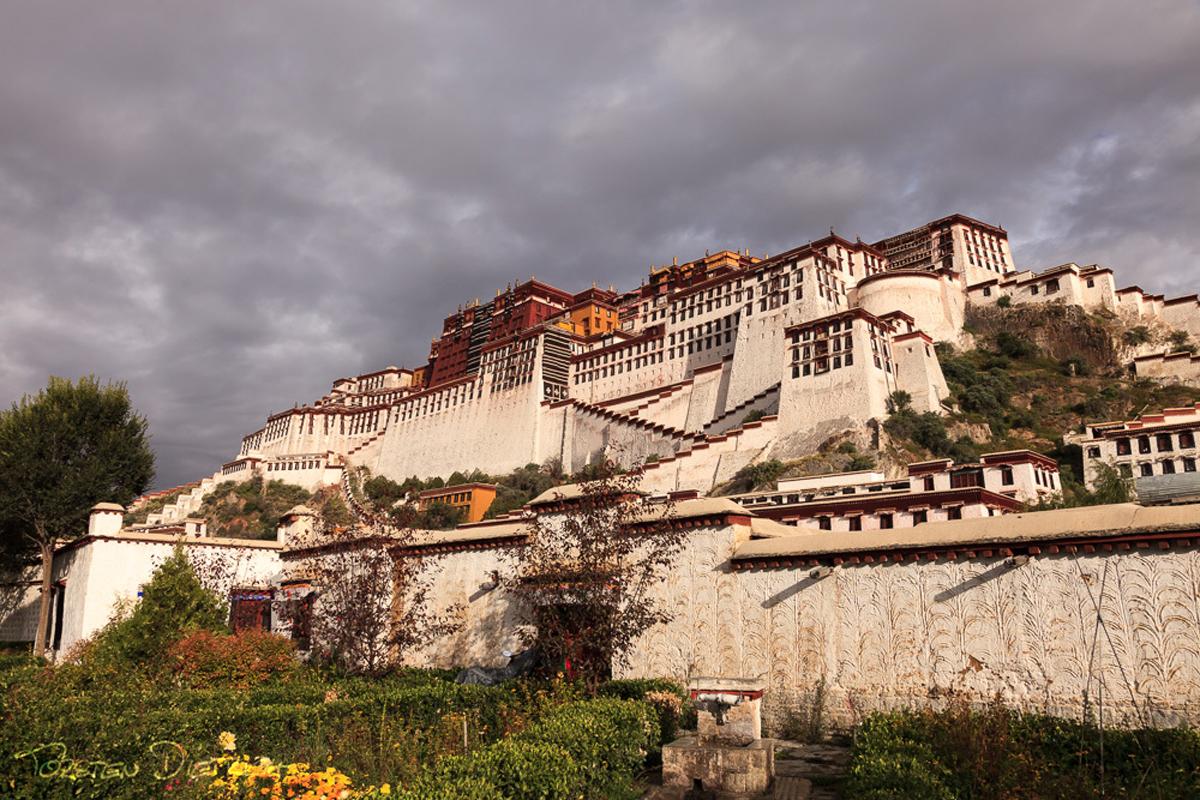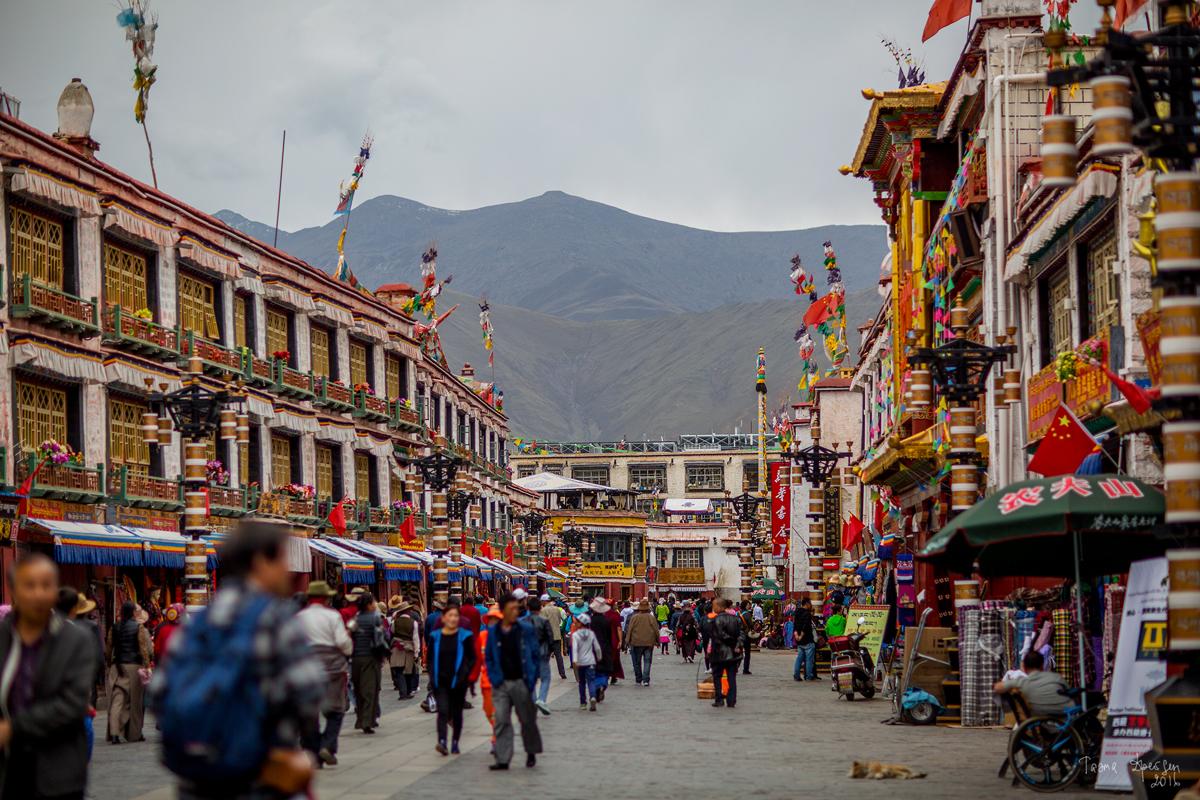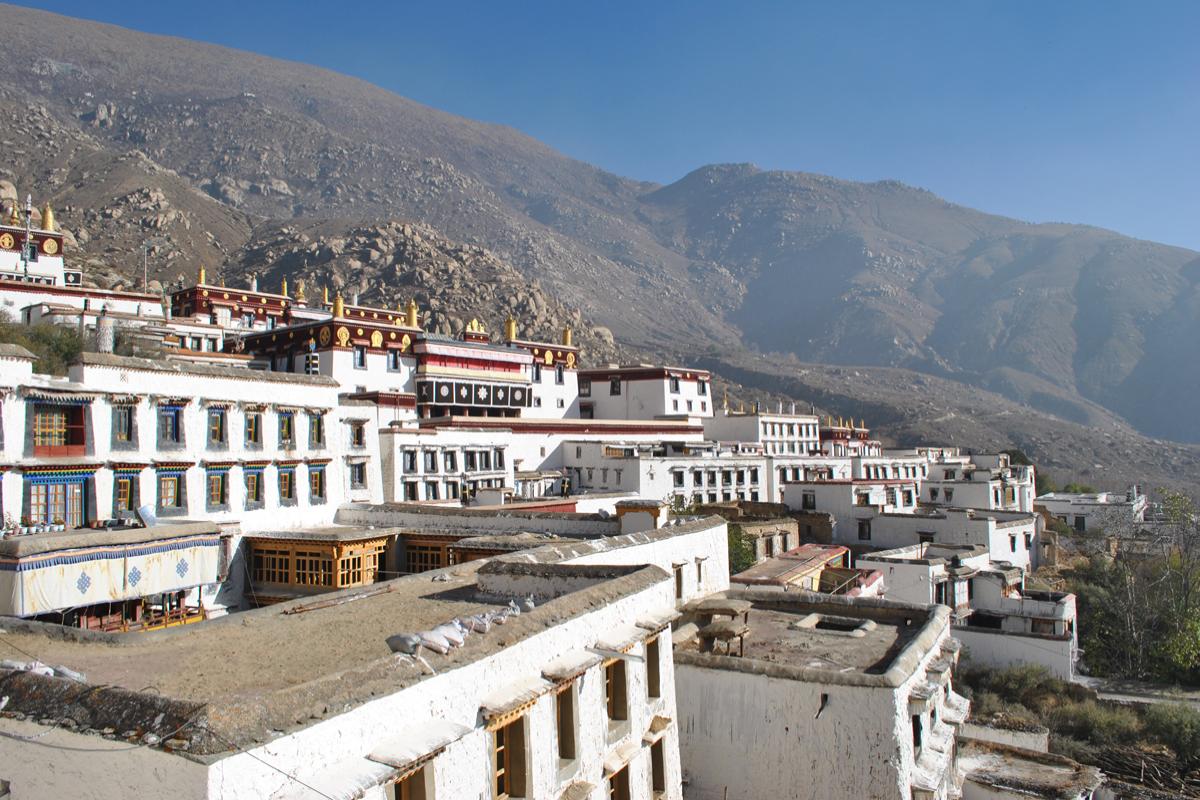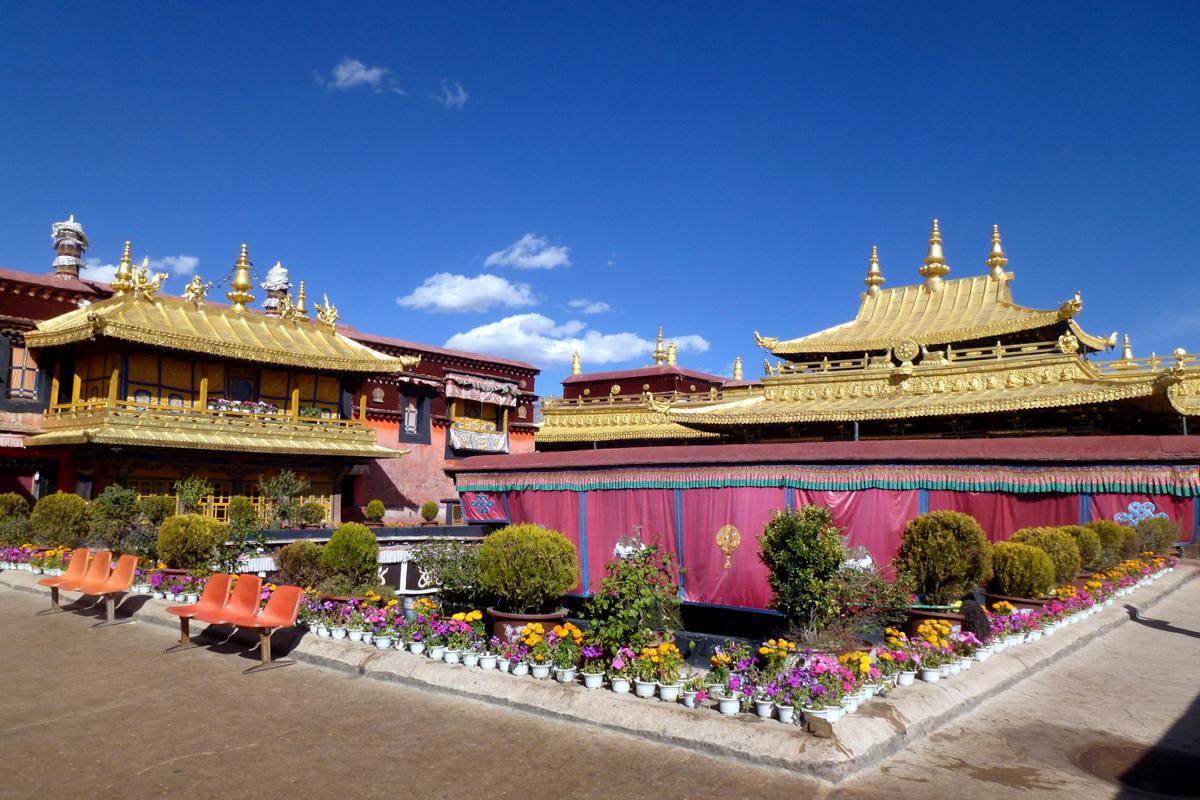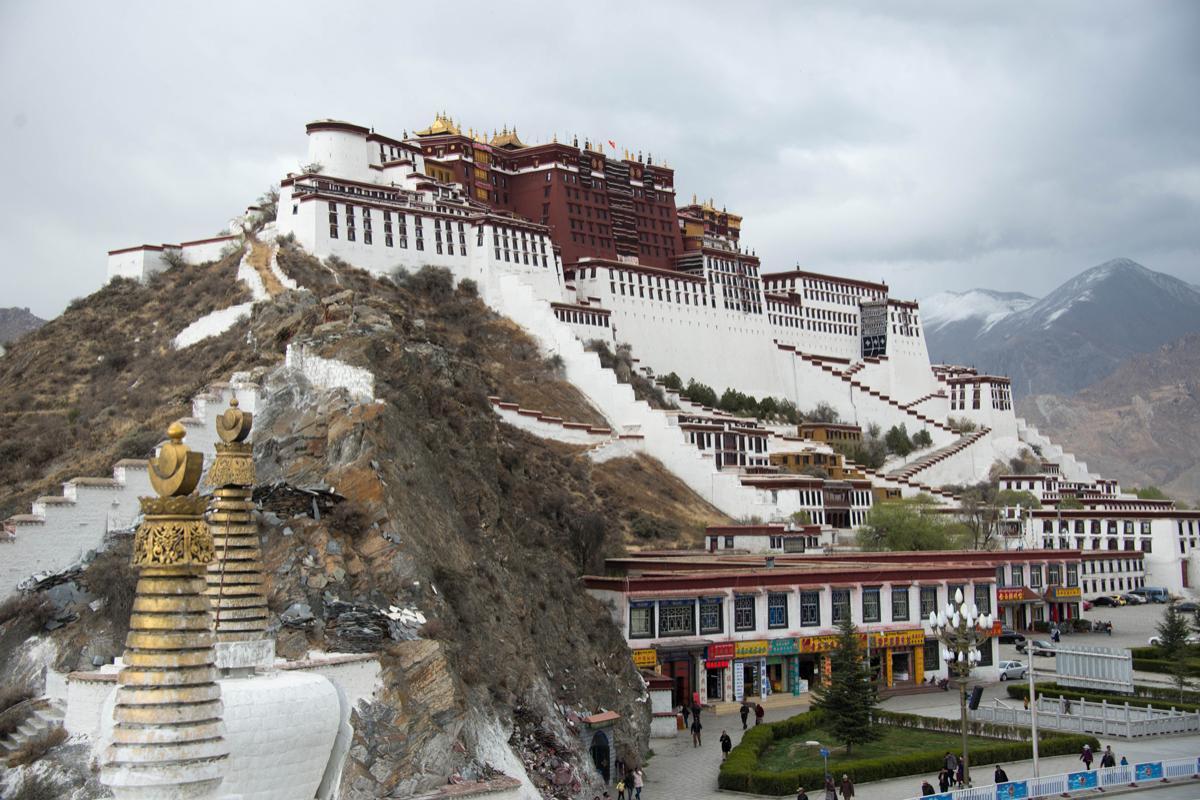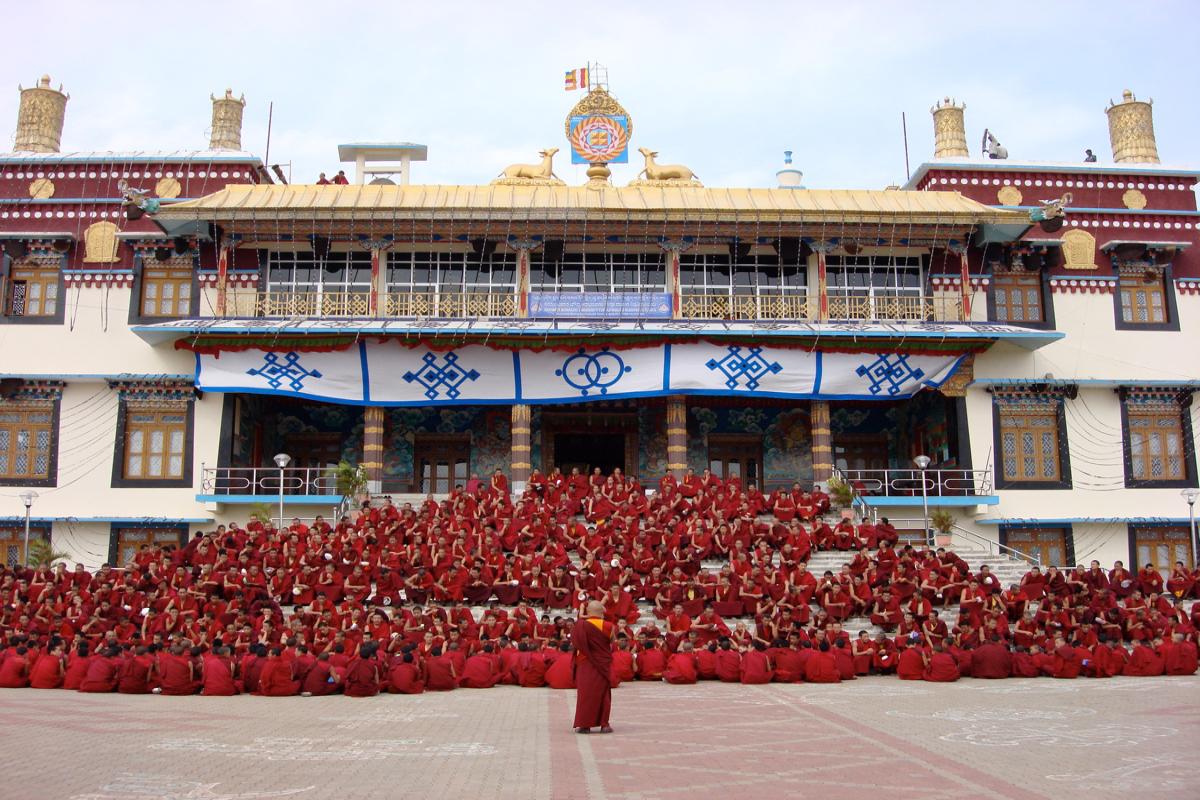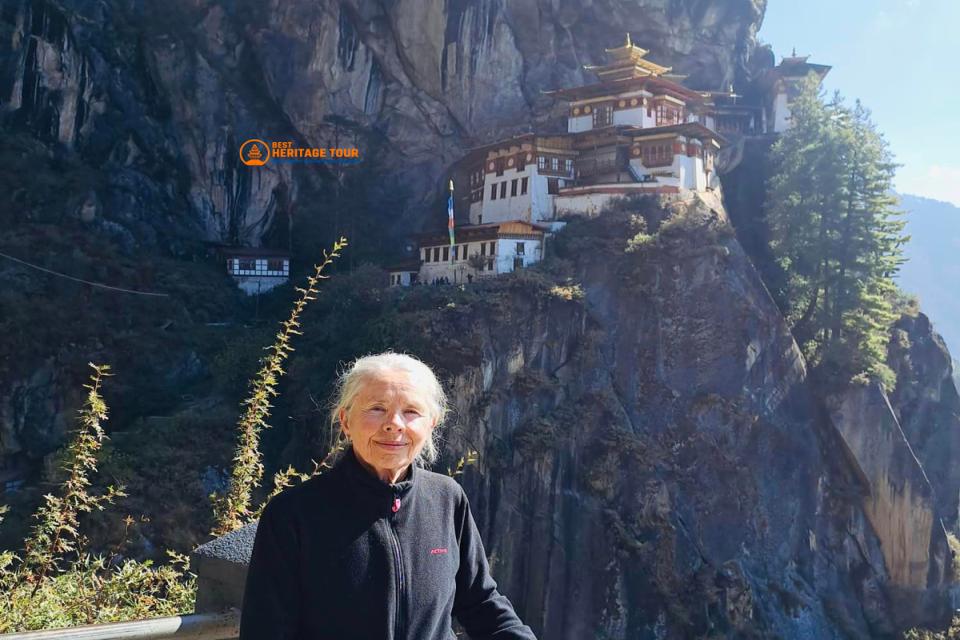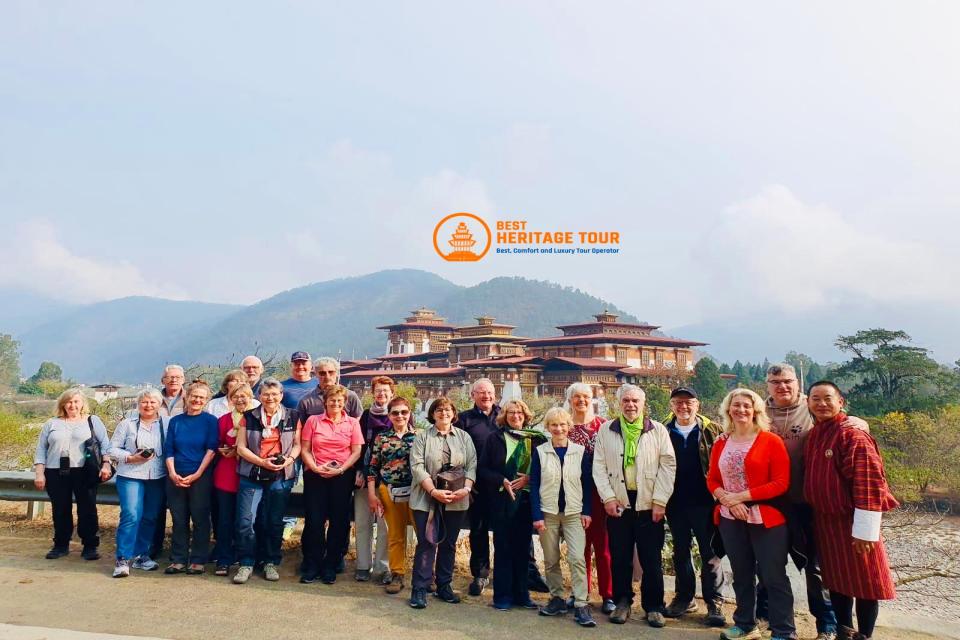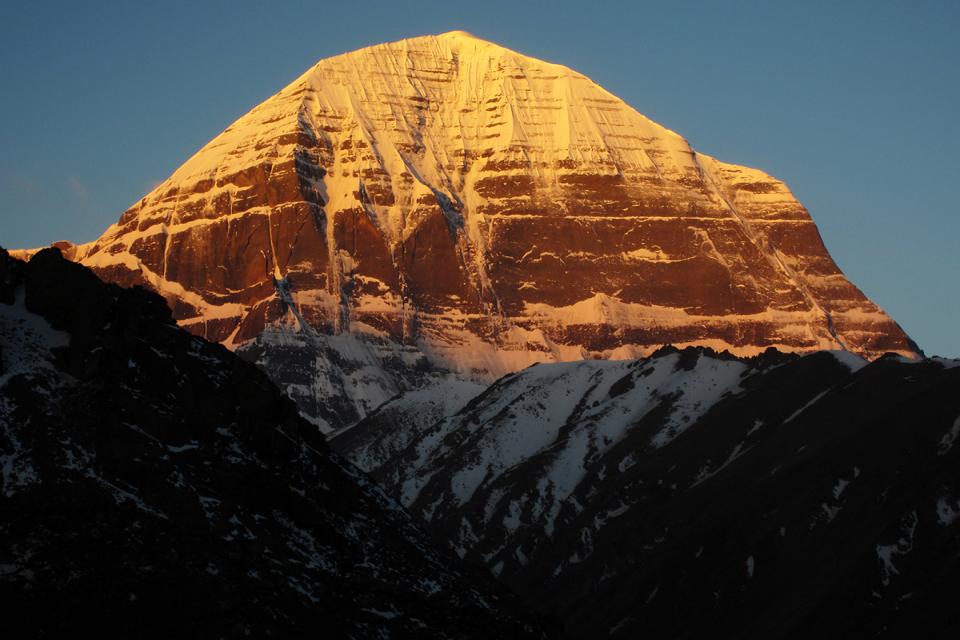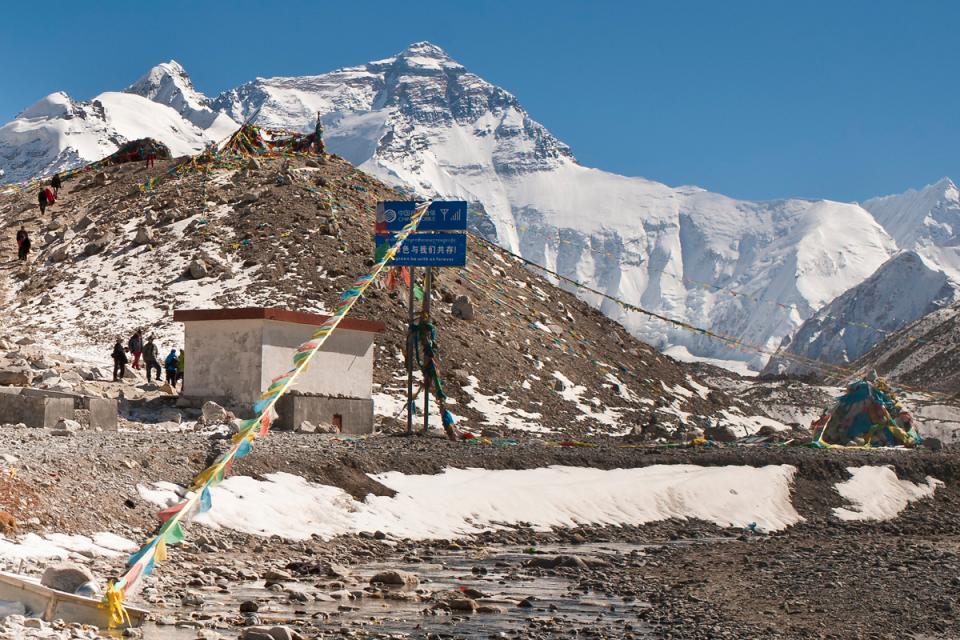Tibet Lhasa City Tour - 4 Days
Insigight on Tibet Lhasa City Tour
The Tibet Lhasa City Tour offers a captivating journey into the spiritual and cultural heart of Tibet. Explore Lhasa’s most iconic landmarks, including the Potala Palace, Jokhang Temple, and ancient monasteries, while experiencing the unique charm of Tibetan culture.
Trip at a Glance
Key Highlights
- Lhasa as the spiritual heart of Tibet.
- UNESCO World Heritage Site and former Dalai Lama residence, Potala Palace.
- Holiest site in Tibetan Buddhism, Jokhang Temple, with the Sakyamuni Buddha statue.
- Vibrant marketplace with Tibetan handicrafts and local culture, Barkhor Street.
- Learn about ancient healing practices at the Tibetan Traditional Medicine Hospital.
- Drepung Monastery and Sera Monastery, with monk debates.
- Interaction with locals and participation in traditional ceremonies.
- Lhasa’s altitude of 3,650 meters with acclimatization included.
- Private transportation, expert guides, comfortable accommodations, and oxygen/water supply.
- Additional tours to Shigatse, Gyantse, Everest Base Camp, or Mount Kailash.
Trip Overview
The Tibet Lhasa City Tour is a captivating journey into the heart of Tibet's cultural, spiritual, and historical richness. Lhasa, the capital of Tibet, is revered as the "Place of the Gods" and holds immense significance as the residence of the Dalai Lama and the seat of Tibetan Buddhism. Situated at 3,650 meters above sea level on the banks of the Kyichu River, Lhasa boasts a legacy of over 1,300 years, preserved in its sacred sites, ancient scriptures, art, and architecture.
This four-day tour offers an immersive experience of Lhasa's most iconic landmarks and UNESCO World Heritage Sites, including the majestic Potala Palace, the spiritual Jokhang Temple, and the serene Norbulingka Summer Palace. Additional highlights include visits to Sera Monastery, a prominent center of Tibetan Buddhist learning, and Drepung Monastery, one of the largest monasteries in the Gelugpa sect. Designed as a concise yet enriching package, this tour covers the essence of Lhasa, making it a truly memorable journey.
Why Choose the Tibet Lhasa City Tour with Best Heritage Tour?
1. Cultural and Spiritual Significance
Lhasa is the spiritual heart of Tibet, home to revered landmarks such as the Potala Palace, Jokhang Temple, and ancient monasteries. The city offers a profound understanding of Tibetan Buddhism and its vibrant cultural heritage.
2. Potala Palace
A UNESCO World Heritage Site and former winter residence of the Dalai Lama, the Potala Palace is a marvel of Tibetan architecture, featuring intricate artwork and priceless religious artifacts.
3. Jokhang Temple
The holiest site in Tibetan Buddhism, the Jokhang Temple attracts pilgrims from across Tibet. Visitors can witness the temple's vibrant atmosphere and explore its sacred relics and statues.
4. Barkhor Street
Encircling the Jokhang Temple, Barkhor Street is a lively marketplace showcasing Tibetan handicrafts, religious artifacts, and local cuisine. It offers a window into the daily lives and traditions of Tibetan people.
5. Tibetan Traditional Medicine
Lhasa is home to the renowned Tibetan Traditional Medicine Hospital, where visitors can learn about ancient Tibetan healing practices, herbal remedies, and their philosophical foundations.
6. Authentic Tibetan Experience
Lhasa offers an authentic glimpse into Tibetan culture, from traditional architecture to vibrant local neighborhoods. Engage with the friendly locals, experience traditional ceremonies, and immerse yourself in the city's unique charm.
7. Gateway to Exploration
Lhasa serves as the starting point for exploring other breathtaking destinations in Tibet, such as Everest Base Camp, Namtso Lake, Yamdrok Lake, and beyond.
Your Journey with Best Heritage Tour
At Best Heritage Tour, we specialize in crafting unforgettable travel experiences. Our dedicated team ensures your Tibet Lhasa City Tour is seamless, offering comprehensive support with necessary permits, private transportation, and comfortable accommodations. Trust us to guide you through this enriching cultural journey, leaving you with cherished memories of Lhasa’s timeless beauty and spirituality.
Embark on this remarkable journey and explore the treasures of Lhasa with Best Heritage Tour!
Itinerary
Begin your journey with a scenic flight from Kathmandu to Lhasa, the heart of Tibet. Tashi Delek! A warm welcome to Lhasa, the capital of the Tibet Autonomous Region. Upon your arrival at the airport, your guide and driver will greet you and take you to your hotel in downtown Lhasa, located about 100 km away, with a journey of approximately 1.5 hours by private vehicle. Spend the day resting and acclimatizing to Lhasa’s altitude of 3,650 meters in preparation for the adventures ahead.
Travel Note: Kathmandu to Lhasa Flight
Currently, there are no direct flights from Kathmandu to Lhasa. An alternative and enriching route is the overland journey through the Gyirong Border, offering breathtaking landscapes and cultural discoveries along the way.
Helpful Tips for Altitude Adjustment:
- Take it slow, stay warm, and hydrate frequently.
- Avoid showers during the first couple of days to conserve warmth.
- Rest well and follow your doctor’s advice regarding altitude.
- Inform your guide or hotel staff immediately if you feel unwell; they are experienced in managing altitude-related issues.
Discover Lhasa’s rich history, unique culture, and spiritual treasures.
Potala Palace
Start your day with a visit to the renowned Potala Palace, a UNESCO World Heritage Site and the former winter residence of the Dalai Lama. At an elevation of 3,700 meters, this architectural marvel holds the title of the highest palace in the world. Climb 365 steps to the Red Palace, where you’ll explore sacred chapels, shrines, and halls adorned with exquisite murals, carvings, and relics. Take in breathtaking panoramic views of Lhasa city from this historic and sacred location. Please note that entry is guided and restricted to one hour, with photography prohibited inside.
Jokhang Temple
Next, visit the 1,300-year-old Jokhang Temple, the spiritual heart of Tibet. Built by King Songtsen Gampo for his queens, Princess Wencheng of China and Princess Bhrikuti of Nepal, the temple houses the revered statue of a 12-year-old Sakyamuni Buddha. Witness pilgrims praying devoutly outside this sacred site, a scene of profound cultural and spiritual significance.
Barkhor Street
Conclude your day with a stroll along Barkhor Street, an ancient pilgrimage circuit that now thrives as a vibrant marketplace. Soak in the lively atmosphere as you sip yak butter tea, don traditional Tibetan attire for photos, or shop for unique handicrafts and souvenirs.
Today, delve into Tibetan Buddhist traditions with visits to two of Tibet’s great Gelug monasteries.
Drepung Monastery
Begin with a drive to Drepung Monastery, once the largest monastery in Tibet and a former residence of the Dalai Lama. Admire its stunning architecture and witness vibrant religious ceremonies, including monks debating Buddhist teachings through animated gestures and rhythmic clapping.
Sera Monastery
In the afternoon, visit Sera Monastery, known for its serene white-stone courtyards and the engaging monk debates held daily (except Sundays) from 3:00 PM to 5:00 PM. These lively debates are a unique tradition, with monks using symbolic gestures to express wisdom and understanding.
Return to your hotel in Lhasa for an evening of relaxation.
Your enriching journey through Lhasa concludes today. Spend your morning exploring at leisure before your guide escorts you to the airport or train station for your onward journey.
Extension Suggestions
If time permits, extend your adventure to explore Shigatse, Gyantse, Everest Base Camp, or Mount Kailash for deeper insights into Tibet’s culture and landscapes.
Thank you for choosing Best Heritage Tour for your Tibet journey. We are excited to welcome you on this incredible journey in China or Asia. Safe travels!
What is included?
- China/ Tibet Visa Fee
- Airport Pickup/ drop service
- Professional licensed English-speaking local guide with extensive knowledge of the region
- Private Vehicle: Experienced drivers and comfortable air-conditioned vehicles
- Hotel Accommodation: 3-star standard hotels with daily breakfasts included
- Meals: Breakfasts plus featured meals
- Admission Tickets & Activities listed in the itinerary
- Tibet Permits: Includes Tibet Entry Permit, Alien Travel Permit, Border Pass, and other necessary permits.
- Private Transportation by Jeep/van provided based on the group size
- Oxygen and Water Supply:
- A personal oxygen container for emergencies.
- Two 300ml bottles of drinking water per person daily.
- A 4L medical oxygen cylinder available in the vehicle
- Complete Service: From tour planning and handling to operations and concluding your trip
What is not included?
- International airfare (to/from your home country)
- Entry visa fees
- Insurance of any kind
- Lunch and dinner
- Personal expenses
- Single room supplement
- Activities not included in the itinerary
- Arrival/departure flights or train tickets on the first and last day
- Natural and political disruptions as well as unexpected events
- Gratuities or tips for guides and drivers
Route Map
Trip Info
Best Seasons for the Tibet Lhasa City Tour
For the Tibet Lhasa City Tour, the best seasons are typically from April to October. During these months, the weather in Lhasa is more temperate, with daytime temperatures ranging from mild to warm, making it ideal for sightseeing. These months also offer clear skies, which enhance the views of the surrounding mountains and provide a more comfortable environment for exploring.
- Spring (April to June): This is one of the best times to visit, as the weather is mild, and the summer crowds haven’t yet arrived. The landscape is lush, and the air is crisp, making it great for both cultural and outdoor activities.
- Summer (July to August): While it can get a bit warmer, the summer season offers clear skies and beautiful views of the mountains. However, be mindful that this is peak tourist season, so it can be more crowded.
- Autumn (September to October): This is another ideal time to visit Lhasa. The weather remains pleasant, and the landscapes are stunning with vibrant fall colors. The altitude may feel a bit cooler, but it's still a good time for sightseeing.
- Winter (November to March): This is also an option, it is colder, and the altitude can be more challenging, especially for those not accustomed to high altitudes. Many roads and some attractions may be less accessible, and travel restrictions can be in place due to snow or weather conditions.
Do I need a Tibet permit to visit Tibet?
Yes, all foreign travelers are required to obtain a Tibet Travel Permit to visit Tibet. The permit can only be applied through a registered travel agency in Tibet (we are a locally based Tibet travel agency with offices in Lhasa). This permit is required to purchase flight or train tickets to Tibet and is necessary for entering Tibet and visiting key locations such as Lhasa and Mount Everest Base Camp.
How long does it take to obtain the Tibet Travel Permit?
The Tibet Travel Permit application process usually takes one to two weeks, so travelers should plan ahead and allow ample time. We recommend making your booking at least one week in advance and sending us the required documents to start the permit application. If you plan to visit Mount Kailash, it is advisable to book at least two weeks in advance due to the longer permit processing time.
How do I book a private Tibet tour?
Booking a private Tibet tour with us is simple. Choose the tour you are interested in, and click “Make an Enquiry for Free.” Fill out the form with your preferences and requirements. You don’t need to make any payment right away. Once we receive your enquiry, one of our professional travel experts will respond within 0.5 to 24 hours. After confirming all the details, you can proceed with a deposit. If you have any questions before booking, feel free to contact your travel expert directly.
Combine Your Tibet Tour with Other Destinations in China
The itinerary provided is a popular choice, but we can fully customize it based on your preferences, interests, and budget. If you wish to extend your tour or visit additional destinations in China, simply share your ideas with us. Our travel experts will tailor the trip and offer the best prices for your desired experience.
Transportation
For your private tour, all city transfers to tourist attractions are conducted in a spacious, comfortable, and air-conditioned vehicle. Our experienced drivers ensure a smooth journey. When traveling between destinations, we use domestic flights (economy class) or high-speed trains (second class, typically less than 6 hours). Upon arrival, local guides and drivers will meet you at the airport or train station and escort you to your hotel.
Accommodations & Meals
Accommodations in Lhasa:
- Hotel Category: 3-Star Hotels
- Duration of Stay: 3 Nights
- Location: Central Lhasa, offering easy access to key attractions like the Potala Palace, Jokhang Temple, and Barkhor Street.
- Facilities: Rooms equipped with modern amenities, such as private bathrooms, Wi-Fi, heating, and air conditioning (subject to availability). Some hotels may also offer room service, a restaurant, and a lounge area for guests' comfort.
- Accommodation Standards: The 3-star hotels selected for this tour are well-rated for their comfort and hospitality, offering a mix of Tibetan charm and modern conveniences. Rooms are designed to be cozy, with comfortable beds and clean facilities. While the primary focus is on cultural immersion, hotels ensure a restful stay after a day of sightseeing.
Meals:
- Daily Breakfast: Included each morning at your hotel to fuel your day of sightseeing and exploration.
- Lunch and Dinner: Not included in the package; meals can be purchased at local restaurants, where you’ll have the opportunity to try authentic Tibetan cuisine (e.g., momo, yak meat, butter tea, etc.).
- Mineral Water: Provided daily (two 300ml bottles per person).
Important Notes:
- Altitude: Lhasa’s elevation is 3,650 meters. Acclimatization is crucial, and your hotel will be a comfortable place to rest and adjust to the altitude during the tour.
- Hotel Preferences: If you have specific preferences for your accommodation (e.g., non-smoking rooms, specific bed arrangements, etc.), please inform us in advance.
These accommodations ensure that guests can relax and recover after each day’s adventure while being located conveniently for easy access to Lhasa’s cultural landmarks.
If you need further details about the hotels or have specific accommodation requests, feel free to reach out!
Review
A short yet great tour in the Heart of Tibet
A perfect tour with the combination of culture and adventure. Visiting the Potala Palace, Jokhang Temple was a great way to know the Tibetan culture. For me Barkhor Street and Sera...
View Detailgreat personality and amazing tour
Mr. Bimal, what an amazing person you are man!! I just mention you to visit some Himalayan country and with just this much information, you arranged me this amazing Lhasa city...
View DetailBest Tour with valuable knowledge
Visited iconic and beautiful place with knowledgeable guide, Sunil Khanal. Great, that I went with best heritage tour for this tour who provide such a detailed tour to Lhasa city...
View DetailFAQ's
While Nepali is the primary language, most staff members in lodges speak English, and some may even speak other languages. Communication should not be an issue for international tourists.
It’s advisable to be up-to-date on routine vaccinations, including hepatitis A and typhoid. Talk to your doctor about the vaccinations you need for Nepal.
The majority of international flights arrive at Tribhuvan International Airport, which is located in Kathmandu. From this location, travelers can connect to Lukla to commence their trekking journey.
You typically need a valid passport, a completed visa application form, and a passport-sized photo. Payment can be made in cash or via card at the airport.
Yes, tourist visas are eligible for extension at the Department of Immigration located in Kathmandu. Ensure you have a valid reason and required documents for the extension.
If you wish to extend your stay in Nepal beyond your visa’s initial duration, you can do so by applying at the Department of Immigration in Kathmandu. Extensions are available for a maximum of 30 days, and it’s recommended to apply before your current visa expires. Best Heritage Tour can help you with the extension process if required during your Australian Camp Trek.
The Tibet Lhasa City Tour is a captivating journey into the cultural, spiritual, and historical heart of Tibet. It covers iconic landmarks in Lhasa, such as the Potala Palace, Jokhang Temple, and Drepung Monastery, while immersing you in the unique Tibetan culture, religious practices, and breathtaking landscapes. It offers an enriching experience for travelers interested in exploring the soul of Tibet.
The Tibet Lhasa City Tour prepared by Best Heritage Tour lasts for 4 days, with 3 nights spent in Lhasa. During this period, you'll explore the city's most famous religious and cultural sites, including the Potala Palace, Jokhang Temple, and Sera Monastery. It is designed for travelers who want a concise but enriching introduction to Tibet's heritage.
The best seasons to visit Lhasa are spring (April to June) and autumn (September to October), when the weather is mild, and the landscapes are vibrant. Summer (July to August) can also be a good time, but it is peak tourist season, so expect more crowds. Winter months (November to March) are colder, and some areas may be less accessible due to snow.
The Tibet Lhasa City Tour is designed to last 4 days, which is sufficient to explore the main attractions of Lhasa. However, if you want to explore deeper into the Tibetan culture or visit surrounding areas like Mount Everest or Namtso Lake, you may consider extending your trip.
The tour primarily focuses on Lhasa, covering major sites such as the Potala Palace, Jokhang Temple, and Drepung Monastery. However, additional trips to places like Shigatse, Gyantse, Everest Base Camp, or Mount Kailash can be arranged by Best Heritage Tour if you wish to explore more of Tibet.
The Tibet Lhasa City Tour offers a deep dive into Tibetan culture by exploring religious sites like the Jokhang Temple, Potala Palace, and Sera Monastery. These locations are not only architectural marvels but also cultural centers where you can witness Tibetan Buddhism in practice. Through guided tours and interactions with local monks and Tibetans, you will gain insight into the history, traditions, and spiritual practices that define Tibetan life.
The Tibet Lhasa City Tour is unique because it focuses on the rich history, cultural heritage, and religious significance of Lhasa, Tibet’s spiritual center. Unlike broader Tibet tours, this itinerary is specifically designed for travelers who want an in-depth look at Lhasa’s sacred landmarks and the customs that make the city special. The expert guides, who are well-versed in Tibetan history and religion, will provide invaluable knowledge.
The activities prepared by Best Heritage Tour are structured to give you a balanced experience of sightseeing and cultural immersion. Mornings are typically spent visiting historical sites like the Potala Palace and Jokhang Temple, while afternoons may include visiting local markets, monasteries, or enjoying leisure time in Lhasa. The itinerary ensures enough breaks for acclimatization to the altitude.
Yes, Best Heritage Tour make sure that the Tibet Lhasa City Tour is perfect for first-time visitors as it provides an excellent introduction to Tibet’s culture, religion, and stunning landscapes. The itinerary is carefully planned to allow for acclimatization, and the pace is designed for travelers who are new to the region’s high altitude and unique conditions.
Yes, the Tibet Lhasa City Tour can be customized to suit your preferences. Whether you wish to spend more time at certain monasteries, explore additional destinations, or even participate in a special local event, the Best Heritage Tour can adjust the itinerary based on your interests and needs, ensuring a more personal experience.
For the Tibet Lhasa City Tour, it's essential to pack layered clothing, as temperatures can vary dramatically throughout the day. Light, breathable clothing is suitable for warmer days, but you’ll also need warmer layers for the chilly evenings and mornings. Don’t forget to pack a warm jacket, a hat for sun protection, sunglasses, and sturdy walking shoes for exploring the city’s attractions.
A typical Tibet Lhasa City Tour lasts 4 to 6 days, which provides enough time to explore the major highlights like the Potala Palace, Jokhang Temple, and Barkhor Street. If you have more time and want to explore other areas or participate in more cultural activities, you can extend your tour. Speak to Best Heritage Tour to customize your itinerary based on your time and interests.
Yes, visiting the Potala Palace is one of the highlights of the Tibet Lhasa City Tour. The palace is a UNESCO World Heritage site and an iconic symbol of Tibetan culture and history. Your tour guide will provide an in-depth explanation of the palace’s significance and history, and you will have time to explore its grand architecture and fascinating halls.
When visiting Tibetan religious sites, it's important to show respect for local customs and traditions. For instance, always walk clockwise around prayer wheels and stupas, never point your feet towards religious objects or people, and dress modestly. It’s also customary to greet people with a friendly nod or smile, and if you’re taking photographs, be respectful and ask for permission before snapping pictures, especially inside temples.
Depending on when you visit, you may have the opportunity to experience Tibet’s vibrant festivals. The Tibetan New Year (Losar) is one of the most significant events, usually falling between February and March. During this time, Lhasa is filled with celebrations, traditional music, dancing, and rituals. Other festivals like the Saga Dawa (Buddha’s birth, enlightenment, and death anniversary) offer unique cultural insights. Be sure to inquire with Best Heritage Tour for the dates of specific festivals during your visit.
Yes, the Tibet Lhasa City Tour offers several opportunities to interact with local Tibetans. Visiting monasteries, markets, and traditional Tibetan homes can provide cultural insights and allow for meaningful conversations with locals. Many Tibetan people are friendly and proud of their culture, so taking the time to chat or ask questions (with the help of your guide if needed) will enrich your experience.
It’s not necessary to know Tibetan or Chinese to join the Tibet Lhasa City Tour, as the guides will typically speak English and provide translation at important sites. However, learning a few basic Tibetan phrases, such as greetings, can enhance your experience and help foster goodwill with the locals. Your guide will assist in communication if needed.
Yes, the Tibet Lhasa City Tour offers a range of spiritual experiences. You’ll have the chance to visit sacred sites like the Jokhang Temple, where monks and pilgrims engage in prayer and rituals. You may also witness traditional Tibetan Buddhist ceremonies and practices, which can offer deep spiritual insights and create a memorable part of your tour.
Barkhor Street is an essential part of Lhasa’s cultural and spiritual heritage. It’s a bustling market street surrounding the Jokhang Temple, where you can witness local Tibetans performing kora (circumambulation) around the temple. It’s an excellent place to shop for authentic Tibetan crafts and to observe the daily lives of Lhasa’s residents, who blend religious devotion with modern life.
Lhasa is situated at a high altitude (3,650 meters or 12,000 feet), so it’s important to allow your body to acclimatize gradually. Although the Tibet Lhasa City Tour is designed with gradual elevation gain, it's still advisable to take it easy during the first few days. Drink plenty of water, avoid heavy meals or alcohol, and rest frequently. If you experience symptoms like dizziness or shortness of breath, let your guide know immediately.
To get the most out of your Tibet Lhasa City Tour, embrace the local culture and traditions. Take time to understand Tibetan Buddhism by engaging with monks, visiting sacred temples, and participating in local ceremonies. Be patient and respectful of local customs. A knowledgeable guide will enhance your experience by explaining the history and significance of the places you visit.
Yes, the Tibet Lhasa City Tour can be customized to suit your interests, whether you want to explore specific religious sites, Tibetan culture, or scenic spots. Best Heritage Tour can modify the itinerary based on your preferences, such as adding a visit to less touristy areas or including special activities like meditation sessions or private teachings from monks.
Lhasa experiences a high-altitude climate. Summers are mild, with temperatures ranging from 15°C to 25°C (59°F to 77°F), while winters can be cold, with temperatures dropping to -5°C (23°F) during the night. The sun is strong, so the days can feel warmer, even in winter. Expect dry weather throughout the year, with very little rainfall.
Lhasa is situated at 3,650 meters (12,000 feet) above sea level, and this high altitude influences its weather. Days can feel warmer due to the sun’s intensity, while nights can be much colder. The altitude can also cause temperature fluctuations, especially during the spring and autumn months.
Visiting Lhasa in winter is possible, but it’s essential to be prepared for cold temperatures and the potential impact of the high altitude. While the city itself remains accessible, some mountain areas and roads may be closed due to snow. It’s important to dress warmly and be mindful of the effects of the altitude.
For winter visits, pack warm clothing, including thermal layers, a good winter jacket, gloves, and a hat. Even if temperatures drop at night, the sun is intense during the day, so sunglasses and sunscreen are necessary. Additionally, bring comfortable shoes for walking, especially for visiting monasteries and markets.
In summer, the weather is mild but can get sunny and warm during the day. Light clothing, such as short-sleeve shirts and trousers, is ideal. However, it’s important to carry a jacket or sweater as temperatures can drop in the evenings. Always wear sunscreen and sunglasses to protect yourself from the strong UV rays.
Lhasa experiences significant temperature variations between day and night. Daytime temperatures can be warm, particularly in summer, with highs ranging from 15°C to 25°C (59°F to 77°F), while evenings can be chilly, especially during the colder months, with temperatures dropping to around -5°C (23°F). The sunlight is intense at this altitude, so while it may feel warm during the day, layers are necessary for the evening.
The weather in Lhasa, though typically dry, can influence your comfort during activities. In winter, it can get quite cold, especially at higher altitudes, so it's recommended to plan more indoor visits, like to monasteries and museums. In summer, you can enjoy outdoor explorations of the Potala Palace or Barkhor Street but should wear sunscreen and hydrate frequently due to the sun’s intensity.
Lhasa experiences very little rainfall, making it an ideal destination for year-round travel. Rainfall is usually concentrated in the summer months, from June to August, but it’s still relatively low compared to many other regions. As Lhasa is located on the Tibetan Plateau, most days are sunny, but be prepared for brief showers if traveling in the monsoon season.
Visiting Lhasa during the rainy season (June to August) is possible, but it’s important to come prepared for occasional downpours. The rain generally doesn’t last long and usually occurs in the late afternoon or evening. The rain can make some outdoor activities less comfortable, but many of Lhasa's key attractions, like the Potala Palace, are indoors and remain accessible year-round.
The high-altitude sun in Lhasa is intense, so it’s essential to take precautions. Always apply sunscreen with a high SPF before heading outdoors, wear sunglasses with UV protection, and a wide-brimmed hat to shield yourself from direct sun. Hydrate frequently and avoid the sun during the peak hours of 10 AM to 4 PM when UV radiation is strongest.
The temperature in Lhasa can vary depending on the season. During the summer months (June to August), the temperature ranges from 15°C to 25°C (59°F to 77°F), while the winter months (November to February) can be much colder, dropping to -5°C to 10°C (23°F to 50°F). The temperature can also fluctuate during the day, so layering is key.
Lhasa, being at a lower altitude compared to other regions of Tibet, tends to have milder weather. While other parts of Tibet, like Everest Base Camp or Ngari, experience much harsher cold and snow, Lhasa’s weather is relatively warmer and more temperate. It is also sheltered by the surrounding mountains, which gives it more sunshine, especially during the daytime.
Weather conditions in Lhasa can occasionally disrupt travel plans, particularly during winter months when snow or rain might affect outdoor activities. However, the tour schedule by Best Heritage Tour is generally planned with the weather in mind, so you’ll still be able to explore the main attractions, even if some outdoor activities are slightly adjusted due to unforeseen weather changes.
Yes, all foreign travelers need a visa to enter China. In addition to a Chinese visa, you will also need a Tibet Travel Permit to visit Lhasa. The permit must be obtained through a registered Tibet travel agency and is necessary for purchasing flight or train tickets to Tibet and visiting its key sites.
To obtain a Tibet Travel Permit, you must apply through a registered travel agency in Tibet and Best Heritage Tour can help you in that. The process typically takes 1 to 2 weeks. You will need to provide your passport and Chinese visa details. Once the permit is issued, you can purchase flight or train tickets to Tibet and start your journey.
No, you cannot obtain your Tibet Travel Permit upon arrival in Tibet. It must be arranged in advance through a registered travel agency. The permit is required before you can board a flight or train to Lhasa. Make sure to plan your permit application ahead of time.
Yes, there are certain restrictions for foreign travelers in Tibet. Most notably, you need a Tibet Travel Permit to enter and move around the region. Foreign tourists are typically required to travel in groups with a licensed Best Heritage Tour and are restricted from visiting certain areas, especially border regions.
You can reach Lhasa by both train and plane. Flights from major cities like Kathmandu or Chengdu to Lhasa are available. Alternatively, trains from mainland China to Lhasa offer a scenic and memorable journey, although it is a longer option. Both modes of transport require you to have the necessary permits for entry into Tibet.
No, a Chinese visa is required to travel to Lhasa, even if you are traveling from Kathmandu. While it is possible to travel to Tibet from Kathmandu, you still need to apply for a Chinese visa in advance. Once the visa is secured, you will also need a Tibet Travel Permit, which is arranged through an authorized Best Heritage Tour.
Upon arrival at Lhasa Gonggar Airport, you will be greeted by your tour guide, who will assist with transportation to your hotel. The airport is located about 62 kilometers (38 miles) from the city center, and the drive takes about 1 hour and 30 minutes. Private transportation is arranged as part of your Tibet Lhasa City Tour package, ensuring a smooth arrival.
Lhasa Gonggar Airport is modern and relatively small, making it easy for international travelers to navigate. The airport has basic amenities such as baggage claim, currency exchange, and transportation services. Signs are typically in both Chinese and English, so finding your way around is straightforward, especially with the assistance of a tour guide.
It typically takes 7 to 10 business days to process the Tibet Travel Permit once all required documents, such as your passport and Chinese visa, have been submitted. It is important to arrange the permit well in advance of your trip. Best Heritage Tour will handle the application process and provide you with the necessary documents before you depart.
No, the Tibet Travel Permit cannot be extended once you are in Tibet. If you wish to explore other parts of Tibet beyond Lhasa, you will need to apply for a new permit. It’s important to plan your travel itinerary and secure the necessary permits before arriving, as extending permits in Tibet is not an option.
Yes, all foreign travelers need a Tibet Travel Permit, which is different from a regular China visa. The permit is obtained through a registered travel agency in Tibet. You will need to provide documents like a copy of your passport and China visa, and the permit process typically takes about 1–2 weeks. Best Heritage Tour can help you with this process.
No, you cannot book the Tibet Lhasa City Tour without a valid Tibet Travel Permit. It’s a mandatory requirement for all foreign visitors to Tibet. You can’t purchase tickets for flights or trains to Tibet without the permit, and the guide will need to present it at checkpoints.
No, foreign travelers are required to book a tour with a registered travel agency to visit Tibet, and the agency will help with obtaining your Tibet Travel Permit. Independent travel is not permitted, as the government regulates the flow of tourists for safety and administrative reasons. Working with a Best Heritage Tour ensures all necessary permits are secured.
Yes, it is possible to travel to Tibet from Nepal, but you’ll still need to arrange a Tibet Travel Permit through a registered Best Heritage Tour. Most travelers fly from Kathmandu to Lhasa, though there are also overland routes available. Keep in mind that the overland journey requires permits for both Nepal and Tibet.
The tour package includes hotel accommodation in 3-star hotels, daily breakfasts, airport pickups, professional guide services, private transportation, and admission fees for all activities mentioned in the itinerary. It also covers essential Tibet permits, oxygen, and water supply.
Daily breakfast is included as part of the Tibet Lhasa City Tour. However, lunch and dinner are not included in the package and can be purchased at local restaurants. You’ll have the opportunity to try authentic Tibetan dishes such as momo and yak meat, which are popular in the region.
Additional costs may include lunch and dinner at local restaurants, tips for guides and drivers, personal expenses like souvenirs, and optional activities not included in the itinerary. Some tours may offer optional extensions or special experiences, such as a visit to Everest Base Camp, which would incur extra charges.
Extra costs can vary depending on your preferences. On average, you may spend about $10 to $20 per day for meals not included in the package. Additionally, tips for guides and drivers, souvenirs, and any optional activities (like visiting Everest Base Camp or Mount Kailash) should also be factored into your budget.
Tipping is not mandatory but is appreciated for good service. Guides and drivers generally expect tips if they have provided excellent service during your trip. A tip of around $5 to $10 per day for guides and $3 to $5 for drivers is typical. You can adjust the amount based on the level of service you receive.
The refund policy for the Tibet Lhasa City Tour depends on the specific terms and conditions set by the Best Heritage Tour. Typically, cancellations made 30 days before the tour may receive a partial refund, while cancellations within a shorter timeframe may result in non-refundable deposits or total cancellation charges. It’s best to check the operator’s cancellation policy before booking.
Yes, you can pay for the Tibet Lhasa City Tour in Chinese Yuan (CNY) when you are in Tibet, but it’s typically easier to pay in advance using international payment methods like credit cards or wire transfers. Be sure to confirm the payment options with Best Heritage Tourprior to booking. It’s also advisable to carry some cash for small expenses.
There are no hidden charges in the Tibet Lhasa City Tour package, but extra costs may include meals that aren’t included in the package (such as lunch or dinner), tips for guides or drivers, optional excursions, and personal expenses like souvenirs. Make sure to clarify what’s included in your tour and plan for additional costs like these.
Most Best Heritage Tours accept credit card payments, including major international cards such as Visa and MasterCard. However, it’s always a good idea to confirm this with the Best Heritage Tour before booking, as some smaller agencies may prefer payments via bank transfer or cash.
Yes, you may want to bring extra money for shopping during the Tibet Lhasa City Tour. Lhasa has vibrant markets where you can buy unique souvenirs, Tibetan handicrafts, and local art. It’s a good idea to carry a mix of cash in Chinese Yuan for shopping, though many shops accept credit cards.
The cost of the Tibet Lhasa City Tour includes accommodation in 3-star hotels, daily breakfast, entrance fees to major attractions, private transportation, and a professional guide. It also covers permits such as the Tibet Travel Permit and necessary travel insurance. Meals other than breakfast, personal expenses, and optional activities are not included in the price.
Breakfast is included in the package, but lunch and dinner are not. You will have the opportunity to enjoy authentic Tibetan cuisine at local restaurants, with options like momo (dumplings) and yak meat dishes. However, be mindful that meals in Lhasa can be an extra cost, and you should budget accordingly.
When booking the Tibet Lhasa City Tour, all major expenses are included, such as accommodation, transportation, and entrance fees to tourist sites. However, there may be additional costs for optional activities (like private ceremonies or excursions), meals (except breakfast), and personal expenses such as souvenirs, snacks, and tips for guides and drivers.
Payment for the Tibet Lhasa City Tour can typically be made via credit card, bank transfer, or online gateway. Extra fees may apply for currency conversion or processing fees depending on the payment method. Ensure you discuss payment details with Best Heritage Tour and confirm all costs upfront to avoid surprises.
Yes, children are welcome on the Tibet Lhasa City Tour, but parents should be mindful of the high altitude, which can affect younger travelers. It’s essential to allow time for acclimatization and consult with a pediatrician before traveling to high-altitude destinations. Special arrangements can be made for children’s comfort during the trip.
There are no specific age restrictions for the Tibet Lhasa City Tour, but due to the high altitude, older travelers or those with existing health issues should consult their doctor before embarking on the trip. The tour is suitable for most people, provided they are in good health and can handle the moderate physical demands of the itinerary.
The Tibet Lhasa City Tour may present some challenges for travelers with mobility issues due to the high altitude and uneven terrain of some sites. While the city itself is accessible, some monasteries and cultural sites may require climbing stairs. It’s important to discuss your specific needs with the Best Heritage Tour in advance to ensure appropriate arrangements.
Yes, solo travelers are welcome on the Tibet Lhasa City Tour. The tour accommodates individuals as well as small groups, providing a great opportunity for solo travelers to experience Tibet's spiritual and cultural heritage. The guide will ensure that you have a fulfilling and comfortable experience throughout the journey.
Absolutely, while Lhasa is the spiritual center of Tibet, the Tibet Lhasa City Tour offers a rich cultural and historical experience that is enjoyable for people of all backgrounds, whether religious or not. You’ll explore Tibet’s heritage, art, architecture, and stunning landscapes, making it an enriching experience for everyone.
Yes, Lhasa is a safe destination for solo female travelers. The city is relatively calm and welcoming, with a well-established tourism infrastructure. During the Tibet Lhasa City Tour, you’ll be accompanied by an experienced guide, and the private transportation ensures your comfort and safety. As with any travel, exercising common sense and respect for local customs is recommended.
When visiting religious sites like monasteries and temples, it’s important to avoid disrupting prayers, rituals, or ceremonies. It’s polite to ask for permission before taking photographs, especially of monks or sacred objects. Always show respect by following local customs, such as walking clockwise around prayer wheels and avoiding touching sacred statues.
Elderly travelers can certainly join the Tibet Lhasa City Tour, though special consideration should be given to health and physical condition, particularly in relation to altitude sickness. It’s important to ensure that the elderly participants are physically fit and have no medical contraindications to high-altitude travel. Best Heritage Tour can help tailor the itinerary to accommodate their needs.
The Tibet Lhasa City Tour is suitable for families, including children, as the itinerary includes visits to peaceful temples, monasteries, and cultural sites. However, due to the high altitude, it’s important for children to be acclimatized and take things at a slower pace. Always consult with your doctor before bringing children to high-altitude destinations.
While Lhasa is accessible for most travelers, the high altitude and some uneven terrain might pose challenges for individuals with physical disabilities. However, with proper preparation, including assistance from the Best Heritage Tour, it’s possible to enjoy the tour. Discuss any special requirements or concerns with Best Heritage Tour before booking.
During the Tibet Lhasa City Tour, you will stay in 3-star hotels that are centrally located in Lhasa. These hotels offer modern amenities such as private bathrooms, Wi-Fi, heating, and air conditioning (subject to availability). The accommodations provide a comfortable base for exploring the city’s cultural and historical attractions.
Yes, it is possible to upgrade your hotel to a higher category, such as 4-star or 5-star hotels, depending on your preferences and budget. You can discuss your accommodation preferences with the Best Heritage Tour before booking, and they will arrange the best options for you.
The hotels chosen for the Tibet Lhasa City Tour are selected for their comfort and ability to accommodate travelers at high altitudes. They are equipped with heating and other amenities to ensure that guests are comfortable despite the cool temperatures that can occur at night.
Most hotels in Lhasa offer Wi-Fi access, although the connection can be slower than what you might be used to at home due to the high-altitude environment. Wi-Fi is generally available in common areas, and some hotels provide it in the rooms as well. It’s advisable to manage your expectations about internet speed.
Yes, many hotels in Lhasa offer non-smoking rooms. If this is a preference for you, it’s a good idea to request this when booking your Tibet Lhasa City Tour. The Best Heritage Tour can ensure that a non-smoking room is available during your stay, subject to availability.
The Tibet Lhasa City Tour includes stays in 3-star hotels located in central Lhasa. These hotels offer comfortable rooms with modern amenities, including Wi-Fi, private bathrooms, and heating. The accommodations balance Tibetan charm with convenience and are close to major attractions like Potala Palace and Jokhang Temple.
Yes, most hotels can accommodate special requests for room preferences such as non-smoking rooms, twin beds, or early check-in. However, it’s advisable to inform the Best Heritage Tour well in advance to ensure that your requests are fulfilled.
Yes, while the standard tour package typically includes 3-star hotels, Lhasa also has luxury hotels and resorts for travelers seeking higher-end experiences. Some luxurious accommodations offer stunning views of the Potala Palace, private guides, and spa services. Speak with Best Heritage Tour if you wish to upgrade your stay for a more premium experience.
Most hotels used during the Tibet Lhasa City Tour provide basic comforts, including Wi-Fi (though it may be slow), private bathrooms, and 24/7 hot water. The rooms are designed to be cozy and warm, especially during the colder months. Some hotels may also have a restaurant, a gift shop, and laundry services for convenience.
For the Tibet Lhasa City Tour, pack layers of clothing to adjust to the changing temperatures. Bring warm clothing, including a jacket, gloves, and a hat, as well as comfortable walking shoes. Don't forget essentials like sunscreen, sunglasses, and a water bottle. It's also a good idea to carry any personal medications you may need.
While you are provided with personal oxygen for emergencies, it’s not necessary to bring your own. The Tibet Lhasa City Tour includes oxygen and water supplies for your comfort, ensuring you have what you need to acclimatize to the high altitude. Always follow the guide’s instructions for maintaining your health during the trip.
Yes, bringing a camera is highly recommended for the Tibet Lhasa City Tour, as there are countless breathtaking landscapes, architectural wonders, and cultural moments to capture. However, please note that photography is restricted in certain places, such as inside the Potala Palace and Jokhang Temple, where you may be asked to leave your camera outside
While packing for Tibet, avoid bringing too many luxury items or valuables that may not be necessary for the trip. It’s also a good idea to avoid bringing prohibited items like drugs, firearms, and certain electronics, as customs may be strict. Keep your luggage light and focused on essentials for the tour.
Yes, it’s advisable to bring some cash in local currency for shopping at markets and paying for meals not included in the Tibet Lhasa City Tour. ATMs are available in Lhasa, but they may charge international fees. Credit cards are accepted in many places, but cash is still the preferred option in certain shops.
When packing for the Tibet Lhasa City Tour, consider bringing light, breathable clothing for daytime, warm layers for evenings, comfortable walking shoes, and accessories like sunglasses, hats, and sunscreen. Don’t forget a warm jacket and any personal medications, as the weather can be unpredictable. A small backpack for daily excursions is also recommended.
While gifts are not required, small tokens of appreciation, such as souvenirs from your home country, are always welcomed by locals. It’s best to offer gifts in a respectful and meaningful way, especially when interacting with Tibetan monks or villagers.
Yes, it’s a good idea to pack a first-aid kit when going on the Tibet Lhasa City Tour. The kit should include basic supplies like band-aids, pain relievers, cold and flu medicine, altitude sickness medication (e.g., Diamox), and any personal prescription medications. Carrying hand sanitizer and wet wipes can also be helpful, as facilities may not always be easily accessible.
Yes, it’s essential to stay hydrated while traveling in Lhasa. The high altitude can cause dehydration more quickly, so carrying a reusable water bottle is recommended. Bottled water is readily available in Lhasa, but it’s also a good idea to carry your own supply during excursions. Avoid drinking tap water unless it's properly filtered.
While the Tibet Lhasa City Tour is not physically demanding, it’s helpful to be in reasonable physical condition, especially due to the high altitude of Lhasa. If you have any pre-existing health conditions, consult your doctor before traveling. It’s important to acclimatize and pace yourself during the tour to avoid altitude sickness.
Altitude sickness can affect some travelers due to Lhasa’s high altitude (3,650 meters). Symptoms may include headaches, dizziness, and shortness of breath. The tour allows time for acclimatization, and oxygen is available for emergencies. It's important to rest, hydrate, and avoid overexerting yourself, especially during the first couple of days.
To prepare for the Tibet Lhasa City Tour, it’s helpful to stay active before the trip by engaging in activities like walking, hiking, or swimming. This can improve your stamina and help your body adjust better to the high-altitude conditions. Additionally, staying hydrated and resting well before departure can help with altitude acclimatization.
Elderly travelers can participate in the Tibet Lhasa City Tour if they are in good health and have no significant medical conditions. It’s advisable to consult with a healthcare professional before the trip and ensure adequate preparation for acclimatization to the high altitude. Your guide will also be there to assist and make the tour comfortable for you.
The activities during the Tibet Lhasa City Tour are generally not exhausting, with moderate walking around the main attractions. The tour includes visits to temples and monasteries that may involve climbing stairs. However, your guide will pace the activities to allow for proper rest and acclimatization, ensuring a comfortable experience.
The Tibet Lhasa City Tour is not physically demanding, but due to the altitude of Lhasa (3,650 meters), it’s important to be in good general health. While there is no strenuous hiking or climbing, some walking at higher altitudes may feel more exhausting than usual. It’s advisable to take things slow, especially on the first day, to acclimatize to the altitude.
The Tibet Lhasa City Tour focuses more on cultural exploration rather than intense physical activity. However, there will be some walking tours of Lhasa’s temples, monasteries, and markets. You may also need to ascend stairs to reach areas like the Potala Palace, so it’s advisable to bring comfortable shoes for walking.
While the Tibet Lhasa City Tour is primarily focused on cultural sightseeing, there are some light hikes involved, especially when visiting sites like Potala Palace or Sera Monastery. These hikes are generally moderate and involve walking up stairs or slopes. However, there is no need for serious hiking or trekking, making the tour suitable for most fitness levels.
Before embarking on the Tibet Lhasa City Tour, ensure that you’re in good health. Consult your doctor about any necessary vaccinations and any existing health conditions. It’s important to take altitude sickness seriously, so be sure to stay hydrated and avoid overexertion during your tour. Also, bring any medications you may need.
To avoid illness during your Tibet Lhasa City Tour, ensure that you drink bottled water, wash your hands regularly, and eat well-cooked food. Protect yourself from the sun and cold by dressing in layers. If you have any concerns or symptoms, don’t hesitate to inform your guide, who can assist with medical care.
Yes, Lhasa has hospitals equipped to handle emergencies. However, due to the city’s remote location, it's best to travel with necessary medications and first aid supplies. If you experience altitude sickness or any medical concerns during the Tibet Lhasa City Tour, inform your guide immediately, and they will direct you to the nearest medical facility.
If you experience symptoms of altitude sickness such as dizziness, headache, or nausea, the best remedy is to rest and avoid physical exertion. Oxygen is available on the tour, and drinking plenty of fluids will help. If symptoms persist, let your guide know so they can assist with further medical attention if necessary.
Before embarking on the Tibet Lhasa City Tour, consult with your doctor to ensure you are physically fit for the altitude. You may be advised to take medications such as Diamox for altitude sickness prevention. Make sure you have all necessary vaccinations, especially for food- and waterborne illnesses. Carry a first-aid kit with essential medications, and stay hydrated during your trip.
Altitude sickness can affect travelers who are not accustomed to high altitudes, like Lhasa’s 3,650 meters. To prevent it, take time to acclimatize, drink plenty of water, avoid heavy meals or alcohol, and rest as much as possible on your first day. If you start feeling unwell, inform your guide immediately; they are trained to assist with altitude-related issues.
There are no specific vaccinations required to visit Tibet. However, it is recommended to have routine vaccinations, such as Hepatitis A, Hepatitis B, and Typhoid. If you plan to travel to other parts of China or Nepal, additional vaccinations may be necessary. Always consult with your doctor before traveling to Tibet to ensure you're up to date on all necessary vaccines.
While it’s possible to use your phone during the Tibet Lhasa City Tour, internet access can be slow due to the region's remote location. Some hotels and cafes provide Wi-Fi, but it may be unreliable. Additionally, certain apps and services, such as Google or Facebook, may be restricted in Tibet.
The currency used in Lhasa is the Chinese Yuan (CNY). You can exchange foreign currency for yuan at the airport, hotels, or local banks. ATMs are available in Lhasa, but ensure you have enough cash for areas with limited access to banking services, especially if you plan to visit remote regions of Tibet.
In Tibet, it’s important to show respect for Buddhist practices and religious sites. Always ask for permission before taking photos, especially in temples. Avoid pointing your feet at religious statues, and be mindful of local customs. When interacting with monks or locals, be polite and refrain from making negative comments about Tibet’s culture.
Yes, you will need a power adapter for your devices. The voltage in Tibet is 220V, and the power outlets typically accept two-pronged plugs (Type A, C, or I). Be sure to bring the correct adapter for your electronics, as charging stations can be limited in some areas.
Yes, many restaurants in Lhasa cater to Western tastes and offer a variety of dishes such as pizza, pasta, and sandwiches. However, to experience the true local flavor, we recommend trying Tibetan specialties like momo (dumplings), yak meat, and butter tea, which are staples of the region's cuisine.
The official currency in Tibet is the Chinese Yuan (CNY). It’s recommended to exchange your money in Kathmandu or China before traveling to Tibet. While there are some ATMs in Lhasa, it's safer to have cash on hand for smaller purchases, especially in remote areas where card payments might not be accepted.
Internet access is available at most hotels in Lhasa, but it may be slower than what you're used to at home. Some websites, especially social media platforms like Facebook and Google, may be restricted in Tibet. It’s a good idea to prepare for limited internet access, and using a VPN can help with connecting to restricted websites.
Due to restrictions in Tibet, internet access can be limited. However, many hotels in Lhasa offer Wi-Fi, though it might be slow. You may also be able to use mobile apps like WeChat to stay connected with family and friends. If needed, use a VPN to access restricted websites, and inform your family of your travel plans in case you have limited connectivity.
The best way to reach Lhasa is by flight, with many international flights connecting to major cities like Chengdu or Kathmandu, which have direct flights to Lhasa. Alternatively, you can take the Qinghai-Tibet Railway from China, which offers a scenic and memorable journey across the Tibetan Plateau.
The flight duration to Lhasa from major Chinese cities such as Beijing or Chengdu is around 3 to 5 hours, depending on the departure city. If you’re traveling from Kathmandu, the flight takes approximately 1.5 hours. It’s advisable to arrive in Lhasa at least a day early to allow for acclimatization before starting your tour.
During the Tibet Lhasa City Tour, you will travel around the city in private vehicles, which are arranged for your comfort and convenience. You’ll be driven to the major sites, and the transportation will be comfortable and safe, ensuring a hassle-free experience as you explore Lhasa's attractions.
Yes, traveling by train to Lhasa is considered safe and offers an incredibly scenic journey. The Qinghai-Tibet Railway is designed for high-altitude travel, and the train is equipped with oxygen supply systems to help travelers adjust to the altitude. The train ride is an unforgettable part of the journey to Tibet.
Flights and train tickets to Lhasa can be booked through your Tibet Lhasa City Best Heritage Tour, who will assist with all necessary travel arrangements, including obtaining your Tibet Travel Permit. It’s recommended to book in advance, especially during peak seasons, to ensure availability for your preferred travel dates.
While you can book flights to Lhasa on your own, it’s often easier to coordinate through your Best Heritage Tour, especially for obtaining the necessary Tibet Travel Permit. Additionally, some Best Heritage Tours offer flight booking assistance and may even provide package deals that include flights and accommodation.
During the Tibet Lhasa City Tour, you’ll typically travel by private vehicle, which ensures comfort and flexibility. The tour will provide transportation for all excursions. Within Lhasa, taxis and local buses are available, but for ease of travel and to avoid language barriers, it’s best to rely on the transportation arranged by your Best Heritage Tour.
While you can book train tickets to Tibet independently, it’s advisable to arrange your tickets through Best Heritage Tour to avoid complications. Best Heritage Tour can handle the necessary permits and provide guidance on the best routes and schedules for the Tibet Lhasa City Tour. Train travel to Lhasa is a scenic experience but requires some planning.

